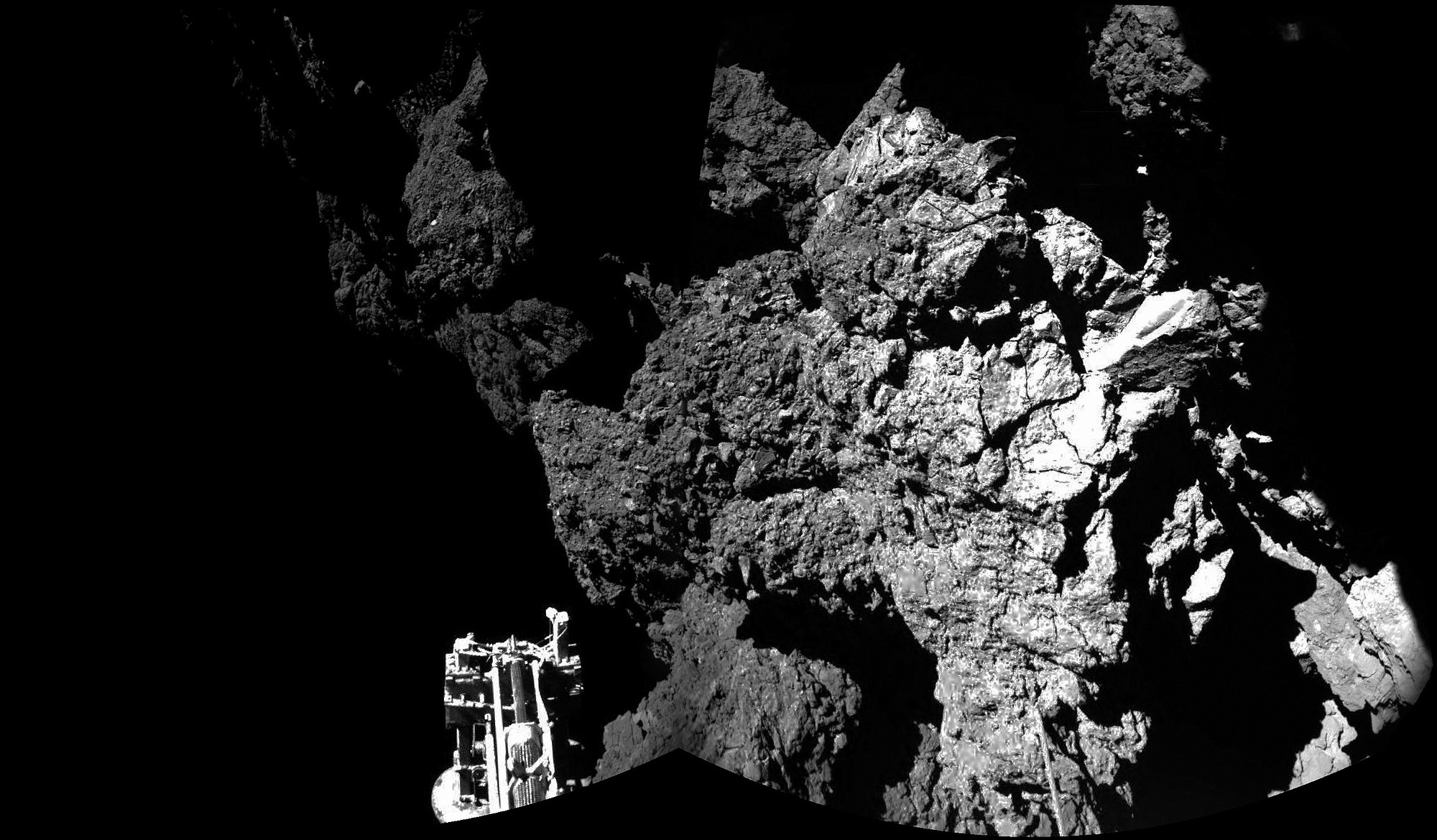BERLIN — The pioneering lander Philae completed its primary mission of exploring the comet’s surface and returned plenty of data before depleted batteries forced it to go silent, the European Space Agency said Saturday.
“All of our instruments could be operated and now it’s time to see what we got,” ESA’s blog quoted lander manager Stephan Ulamec as saying.
Since landing Wednesday on comet 67P/Churyumov-Gerasimenko some 311 million miles away, the lander has performed a series of scientific tests and sent reams of data, including photos, back to Earth.
The lander was lifted Friday by about 1½ inches and rotated about 35 degrees in an effort to pull it out of a shadow so that solar panels could recharge the depleted batteries, ESA’s blog said.
ESA spokesman Bernard von Weyhe on Saturday confirmed the lander’s difficult rotation operation. It’s still unclear whether it succeeded in putting the solar panels out of the shade.
Even if the lander was rotated successfully and is able to recharge its batteries with sunlight, it may take weeks or months until it will send out new signals. Regular checks for signals will continue.
The agency scheduled no media briefings Saturday.
ESA’s mission control center in Darmstadt, Germany, received the last signals from Philae on Saturday morning at 0036 GMT (4:36 p.m. PST Friday). Before the signal died, the lander returned all of its housekeeping data as well as scientific data of its experiments on the surface — which means it completed the measures as planned, the ESA blog said.
Now it’s up to ESA’s team of scientists to evaluate the data and find out whether the experiments were successful — especially a complex operation Friday in which the lander was given commands to drill a 10-inch hole into the comet and pull out a sample for analysis.
“We know that all the movements of the operation were performed and all the data was sent down” to ESA, Ferri said Saturday.



